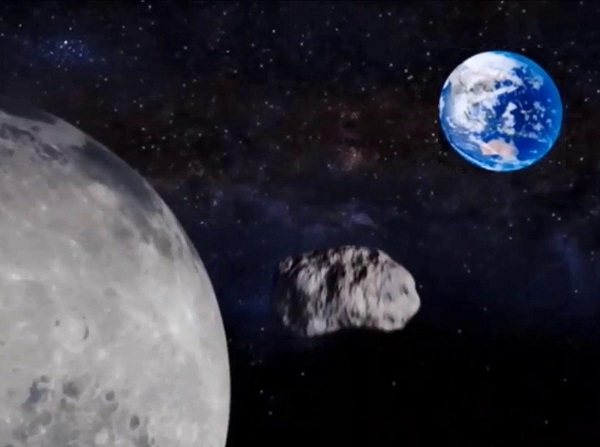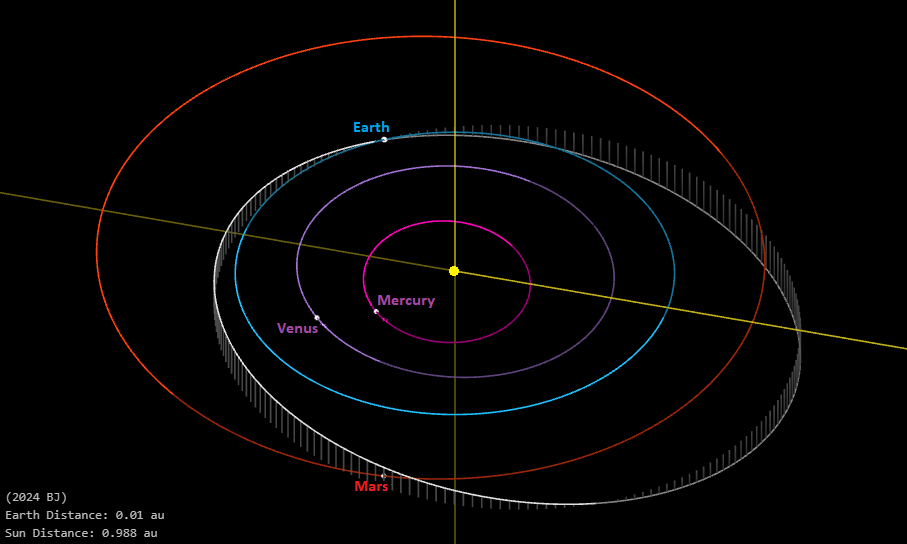Astronomers continue to improve the protection of our planet against undesirable space “aliens”. The asteroid, designated 2024 BJ, was discovered on January 17, and on January 27, it will fly at a distance of 354 thousand km from Earth — this is slightly less than the average radius of the lunar orbit. Its size does not exceed 50 m, that is, it is 2-3 times larger than the Chelyabinsk Bolide. Despite this, a collision with it would not threaten us with a global catastrophe, although the fall of such a body in densely populated areas can have serious consequences.

2024 BJ belongs to the group of “Apollo” asteroids, the aphelion of which are located outside the Earth’s orbit, and the perihelion inside it. It is not difficult to understand that such bodies have the most chances of colliding with the Earth, and what saves us from this is that their trajectories are strongly inclined to the ecliptic. In order for a collision to occur, our planet and an asteroid must simultaneously be near the intersection of their orbits. And it doesn’t happen very often. If they do not “meet” at the same time, the next approach in the absolute majority of cases will take a very long time, because for this, it is necessary that the period of the object’s orbit around the Sun correlates with the Earth year as a fraction of two small numbers — for example, 3/2 or 8/7. Astronomers call such ratios “resonances”. They are also infrequent. The most famous example is the resonance of the Earth and Venus 13/8, but it is not entirely accurate and every 8 years (during which Venus makes 13 orbits) it “unbalances” for about two days.
The orbital period of asteroid 2024 BJ is slightly more than 595 days, that is, its configuration relative to the Sun and the Earth will be fairly accurately repeated only after 44 years. For such a long time, gravitational perturbations from the planets will almost certainly “correct” its orbit in such a way that we should hardly expect the next close approach like the current one. However, this task will already be solved by specialists in celestial mechanics with the help of powerful modern supercomputers.

On January 27, the newly discovered asteroid will initially fly at a distance of about 445 thousand km from the Moon, and after three and a half hours it will approach the minimum distance to Earth. At this time, it will move against the background of the constellations Orion, Taurus and Auriga with an apparent speed of more than 3.5° per hour (five times faster than the Moon). Its relative speed will be approximately 6.3 km/s. Unfortunately, due to the small size of 2024 BJ, it will be possible to observe it even during the closest approach only with large telescopes: the visible brilliance of the asteroid will only slightly exceed the 15th magnitude, which is almost 4 thousand times fainter than the stars that can still be seen with the naked eye in the clear, unlit night sky. For those who want to follow this event, the staff of the Virtual Telescope Observatory, located in Italy, will organize its live broadcast on the website https://www.virtualtelescope.eu/webtv/
Recall that the day after tomorrow, comet Tsuchinshan-1 will fly closest to Earth since its discovery in 1965.
Follow us on Twitter to get the most interesting space news in time
https://twitter.com/ust_magazin


